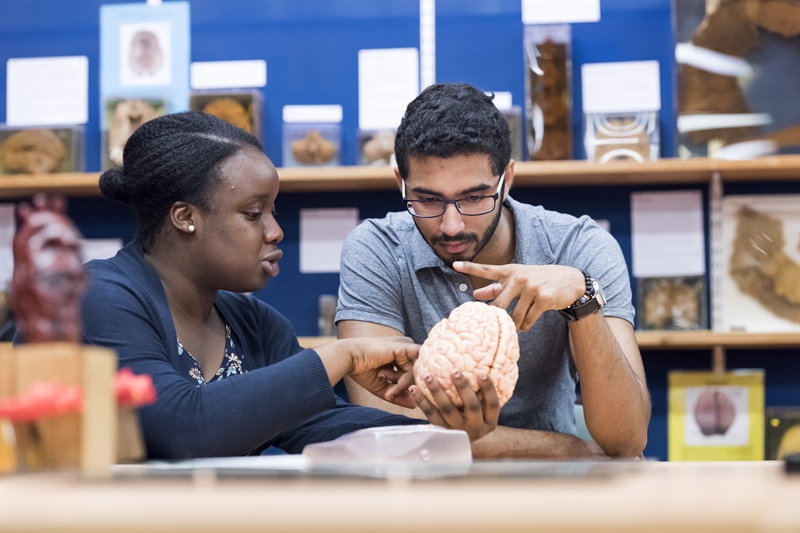Local school children explore our Pathology Museum
The Pathology Museum is an ideal space to learn about human diseases and to help students studying for their A Level biology exams. With the support of a generous alumni donation in the memory of Professor Noel Gowing, the Museum has invited local schools for a day of workshops exploring topics relating to the A Level Biology curriculum.
With organs on display exhibiting diseases from lung cancer to tuberculosis, the university’s museum collection has helped teach students about pathology and the different illnesses affecting humans for over 200 years. For instance, the museum offers students the opportunity to examine a lung damaged by smoking, see what a cirrhotic liver damaged by alcohol consumption looks like, and offers the chance to see ‘Blossom’ the cow, made famous by Edward Jenner in his development of the vaccine for Smallpox.
By far the most popular session is the chance to become a ‘Disease Detective’. Guided by our student ambassadors, the students work together to examine the post-mortem report and the clinical history of a (fictional) deceased patient to explain the cause of death. Throughout the visit, the City St George’s (Tooting) team encourage thought-provoking debate and discussion.
 Students studying in the Pathology Museum.
Students studying in the Pathology Museum.
By working together with young people from a range of diverse background, the School of Health & Medical Sciences aims to raise aspirations and encourage student visitors to explore a career in healthcare.
The Pathology Museum contains human tissues and organs and is regulated by the Human Tissue Authority (HTA). We are not currently open to the public but hold a licence to use the collection for education and training relating to human health. You can read more about our Pathology Museum and the collection in the About Us section of the webpage.
Follow us on Instagram @sgulmuseumarchives